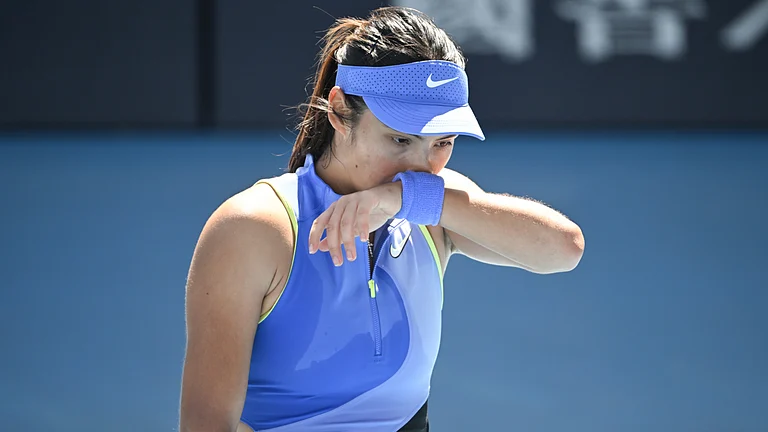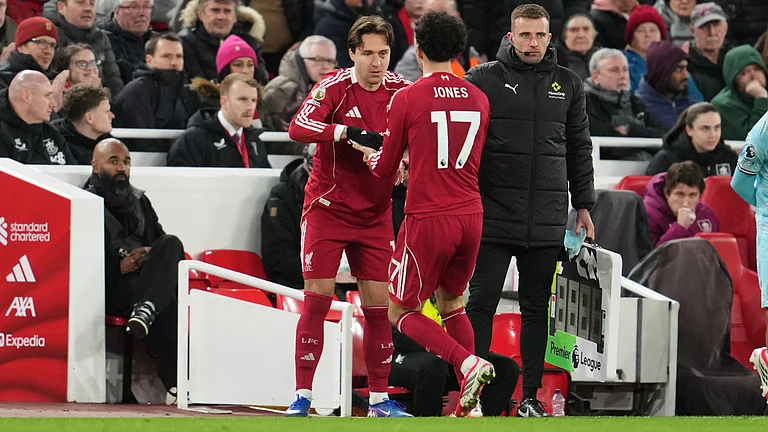The lotus will definitely bloom in Tamil Nadu. Whenever Tamilisai Soundararajan uttered these words during her tenure as the BJP’s Tamil Nadu president, they used to be greeted with scorn and ridicule. A spate of memes on social media would immediately follow. Tamilisai’s confidence had looked far-fetched after her party’s severe drubbing in the 2016 assembly elections and subsequent bypolls. But, on May 11, when four BJP MLAs took oath in the Tamil Nadu assembly (after a gap of 20 years), Tamilisai, now Governor of Telangana with additional charge as Lt Governor of Pondicherry, would have helped herself to a smile of satisfaction.
The doughty doctor from Chennai, whose father was a state Congress president, had crisscrossed the state tirelessly to nurture the BJP in an unfriendly Dravidian terrain. Her successor L. Murugan maintained the momentum with his Vel Yatra and wooed celebrities from different fields to join the party. “The plan was to keep the BJP in the news as a sought-after party, while we concentrated on improving our booth committees to connect with voters,” says K.T. Raghavan, party’s state general secretary. “The state in-charge C.T. Ravi, in fact, virtually lived in Tamil Nadu during the last three months before the elections to give constant inputs.”
ALSO READ: Wonder Woman As The Masked Crusader
The BJP also enlisted the support of seven sub-sects of a Dalit community by clubbing them under the single classification of Devendra Kula Vellalars—a long-pending demand. This helped the party reap gains in the southern districts. For example, Nainar Nagendran, who was a minister in the J. Jayalalitha government of 2011-16, won the Tirunelveli seat for the BJP and was made leader of the legislature party.
The saffron party realised that only locally familiar candidates could take its lotus symbol to the smallest villages, though the alliance with the AIADMK helped. Both Nagendran in Tirunelveli and Dr Saraswathi in Modakurichi were well known to rural voters. Similarly, Vanathi Srinivasan had been nursing the Coimbatore (South) constituency despite her defeat in 2016. The biggest story, however, is that of the diminutive M.R. Gandhi, who enters the assembly at the age of 75 after six unsuccessful attempts. Gandhi never lost touch with the voters of Nagercoil, who finally rewarded him.
ALSO READ: Subaltern Dignity Not Hindutva
“Three of our MLAs won against DMK candidates and the fourth (Vanathi) against actor Kamal Haasan, leader of the MNM,” says BJP spokesperson T. Narayanan. “In fact, we were pitched against the DMK in 14 of the 20 seats we contested and even our state president Murugan lost only by a narrow margin. That four of our MLAs have been elected to the assembly proves that people in Tamil Nadu are willing to recognise the BJP as a serious contender and our party symbol is now familiar across the state. This is definitely a tipping point in the process of building the party here.”
The BJP also scored a bonus in neighbouring Pondicherry, where it won six of the nine seats it contested and will be part of a coalition government headed by N. Rangasamy of the AINRC. The saffron party managed to undermine the Congress by taking away its most visible leaders and then cobbling up an alliance with the AINRC, a Congress breakaway. It also accepted Ranagasamy as the CM candidate, asking its own candidate A. Namassivayam to back off. “The intent was to form the government and we had to accept that Rangasamy is very popular,” says the BJP’s Pondicherry in-charge Nirmal Kumar Surana. “The final results show that our gambit worked. The BJP emerged as the second-largest party, reducing the Congress to just one seat.”
ALSO READ: The CROWN Fits
Having registered its presence in the two Tamil-speaking legislatures, the BJP would now have to overcome the sustained anti-Modi/anti-BJP propaganda of the DMK and its allies. If it manages to avoid providing fresh ammunition to its Dravidian detractors on issues of language, culture and discrimination over central government schemes, the saffron party would be better placed to face the 2024 Lok Sabha elections.
By G.C. Shekhar in Chennai


























